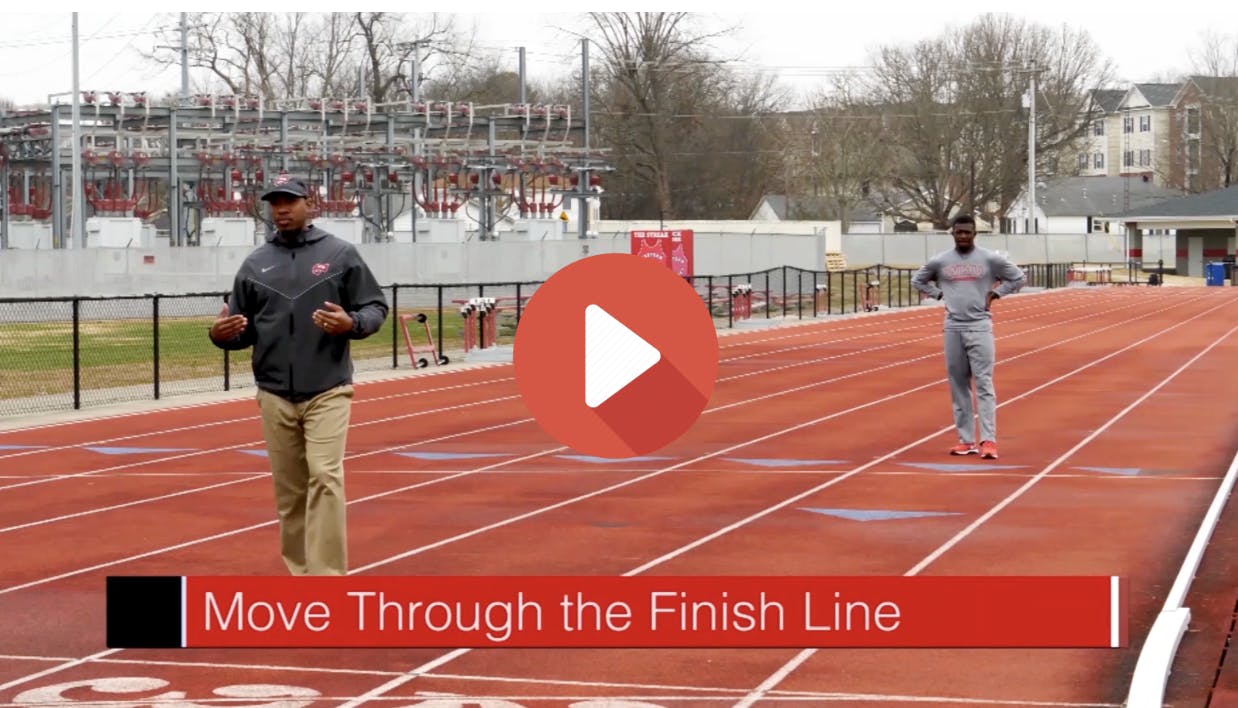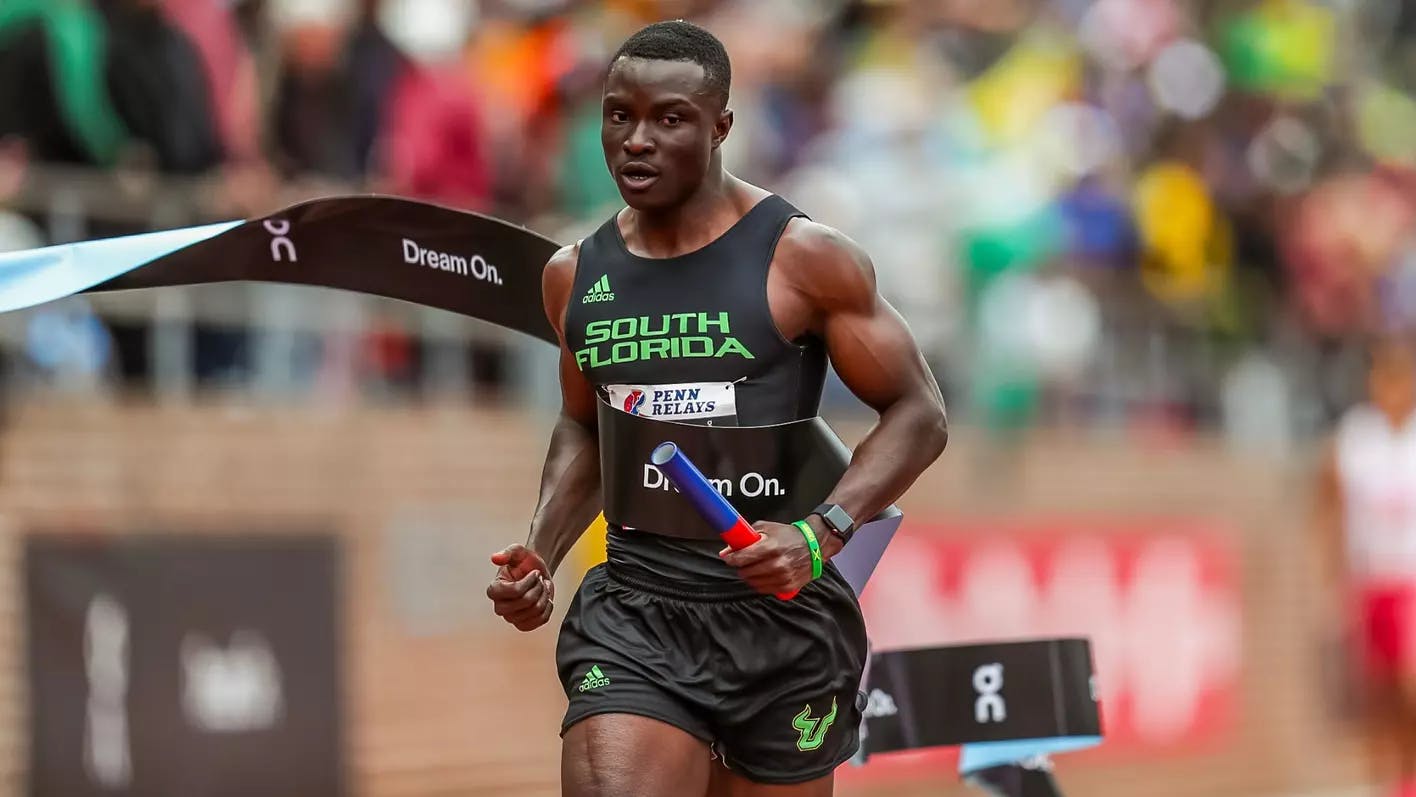Presented on US Sports by CoachTube
Featured course:
Sprints and Relays Tips and Techniques featuring Coach Erik Jenkins
https://tinyurl.com/SprintRelaysTips
Sprinting
and relay events are usually decided by a fraction of a second. It is
imperative to maximize technique and training methods to be successful.
In this course, Coach Erik Jenkins shares several unique training tips,
techniques and race strategies.
https://tinyurl.com/SprintRelaysTips
Video credit:
Kalen Walker 4.15 40 Yard Dash Sprint Mechanics Breakdown
How To Run Faster - By Performance Lab
@Performancelabofcalifornia
https://www.youtube.com/@Performancelabofcalifornia
Performance Labs is a joint app for Pitching Performance Lab and Power Performance Lab. Built for in-gym and remote athletes.
FEATURES:
- Access training plans and track workouts
- Follow along to exercise and workout videos
- Track your meals and make better food choices
- Stay on top of your daily habits
- Set health and fitness goals and track progress towards your goals
- Gain milestone badges for achieving new personal bests and maintaining habit streaks
- Message your coach in real-time
- Get push notification reminders for scheduled workouts and activities
- Connect your Apple Watch to track workouts, steps, habits, and more right from your wrist
-
Connect to other wearable devices and apps like the Apple Health App,
Garmin, Fitbit, MyFitnessPal, and Withings devices to track workouts,
sleep, nutrition, and body stats and composition
Free download:
https://apple.co/3YJbOLQ
The Coolest Sports, The Hottest Talk, Music, and Fun
US Sports Radio
http://www.USSportsRadio.net
Four Essential Tips For Coaching Track Relays and Sprints
- By Grant Young
Coaching track relays can be quite challenging for several reasons. First of all, coordinating the handoffs between runners in a relay requires precise timing and technique. This means that as a coach, you need to ensure that each runner understands their role and the specific timing of the handoff to the next runner.
Additionally, managing the different strengths and abilities of each runner in the relay team can be a complex task. Understanding each athlete's strengths and weaknesses and finding the right combination of runners to form a competitive relay team requires careful observation and assessment.
Furthermore, motivating and inspiring the relay team to work together and perform at their best can be a demanding aspect of coaching track relays. As a coach, you must foster a sense of teamwork and unity among the relay runners, while also addressing individual concerns and maintaining a positive team dynamic.
Lastly, the pressure of ensuring that the relay team performs well in high-stakes competitions adds another layer of difficulty to coaching track relays. The coach must prepare the team both physically and mentally for the challenges they will face during the race.
Coaching track relays requires a combination of technical expertise, interpersonal skills, and strategic thinking, making it a difficult but rewarding endeavor. But with a few tips from an elite coach like Erik Jenkins, any relay coach can get their team winning races in no time.
Erik Jenkins is entering his fifth season as the head coach of the USF track and field and cross country program. The Bulls have collected 23 individual and relay event conference championships, the program’s first men’s team conference championship, and two individual event national championships under Jenkins’ leadership.
Jenkins arrived in Tampa after serving 11 seasons as the head coach at Western Kentucky. During his time as head coach of the Hilltoppers, Jenkins led Western Kentucky to 30 Sun Belt and Conference USA championships, was tabbed conference coach of the year 21 times between outdoor and indoor nominations, and was selected as the USFTCCA Southeast Region Coach of the Year five times.
Coach Jenkins’ ‘Sprints and Relays Tips and Techniques featuring Coach Erik Jenkins’ course, shares several unique training tips, techniques, and race strategies that make it a must-have resource for coaches and sprinters at any competitive level.
Sprinting Mechanics
While a great sprinter can come from any body type or background, Coach Jenkins noted that everyone must encompass three commonalities: the ability to push early, maintain, and decelerate efficiently.
When instilling these crucial components of sprinting success in your athletes, coaches will want to start by ensuring the sprinter’s head is up, and they’re looking forward during the acceleration to the maintenance phase. In addition, the sprinter should understand that their hips need to be slightly behind where their shoulders should be while trying to push at the sprint's beginning.
When it comes to moving the legs, the mechanics should make it so the runner’s knees are headed directly upwards with each motion before their foot goes to dorsiflexion. What sprinters don’t want to be doing is for their calf to bow out while running, which wastes energy and facilitates unnecessary movement which can be the difference between winning and losing a race.
A great way to commit these techniques to memory is by standing in front of a runner and holding their shoulders in place while they’re slightly leaned over in the same way they’d be running during a race. From there, you can help train them to execute their leg revolutions correctly. And if there are multiple players on a relay team that you’re trying to teach at once, have them do this with their hands against a wall.
Starting Blocks
Coach Jenkins explains that there’s no cookie-cutter approach to setting blocks and that each athlete is going to have their own preference.
Coach Jenkins likes to have his athletes set their blocks in practice along the lane lines, so he has a clear visual to be able to evaluate and teach from as they practice their starts.
When it comes to the actual start, the coach wants to make sure their athletes’ hands are completely behind the line, that their weight is shifted right on top of the hands around their shoulder blades, and that the head is in a neutral position with the spine. All of that should remain the same once the athlete’s bottom comes up right before the race begins, aside from where their weight is shifted (it will shift backward to the core/legs).
The Finish

Coach Jenkins believes that the most important aspect of developing a sprinter is developing the way they finish races. And the first and foremost aspect of this is ensuring that the sprinter is moving through the finish line rather than moving or running to the finish line.
In a fast race where the winner and loser can be decided between hundredths of a second, there can be no cruising through the finish line. Instead, the sprinter must be committed to the finish line and run through it.
A great way to coach this is by having
a focus point that is past the finish line. For example, a 100 m sprint
or relay runner should be actually thinking they’re running a 105 m
race because that extra 5 m should be completed with the same intensity to make sure the runner doesn’t let up on the gas.




No comments:
Post a Comment